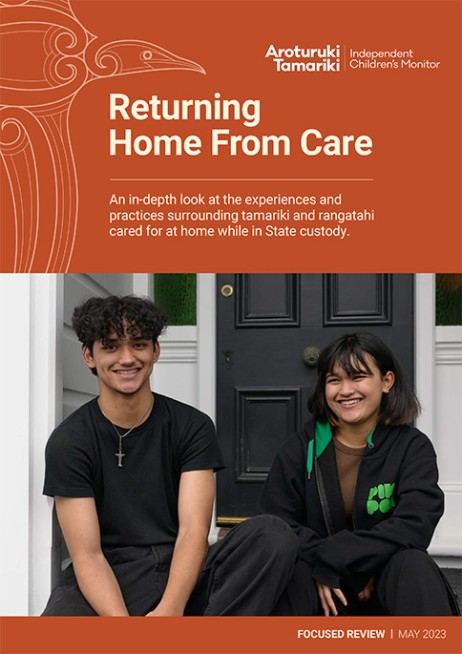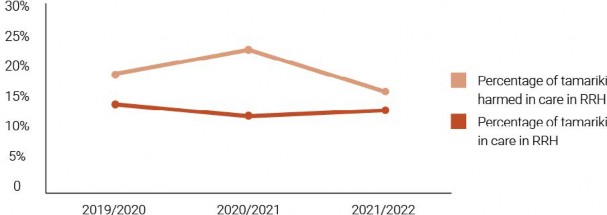Aroturuki , the Independent Children’s Monitor, was established in 2019.
Our role was expanded in 2023, under the Oversight of the Oranga Tamariki System
Act, to monitor the wider oranga tamariki system.
In this review we look at the experiences and practices surrounding tamariki and
cared for at home by their parent/s while in the custody of the Chief
Executive of Oranga Tamariki. This includes what practice, services and supports
are wrapped around tamariki, rangatahi and their parents to ensure a safe return,
or remain, home. We look at what works well, and what doesn’t, to inform future
return home transitions.
For many tamariki and rangatahi who are cared for away from their parents, there is an
emotional cost. Most do not want to live away from their parents, they want the harm
to stop. Being returned to their parents’ care, when it is safe and meets all their needs,
is the best possible outcome. When they do return home, tamariki and rangatahi, and
their parents, must be supported to make sure it has every chance of success.
We heard what makes a return home a success and about the many challenges.
This review identifies several key areas that require attention to support the goal we
all have of tamariki thriving at home. As we found in our recent Experiences of Care
report, frequency of social worker visits, communication between social workers and
parents and , collaboration between government agencies, and availability
of services are barriers to improved outcomes for tamariki and rangatahi and a
successful return home.
We heard about a greater emphasis being placed on returning tamariki and rangatahi
to their parent/s. If this is to happen, it is important that clear guidance is in place to
support social worker practice, that all agencies ensure that services and supports for
tamariki and their whānau are there when they need them, and finally, that adequate
self-monitoring is in place to understand what is working well, and areas of risk.
Our heartfelt thanks go to the parents, rangatahi and tamariki, and kaimahi who
shared their experiences with us.
Arran Jones Nova Banaghan
Chief Executive Chief Monitor



